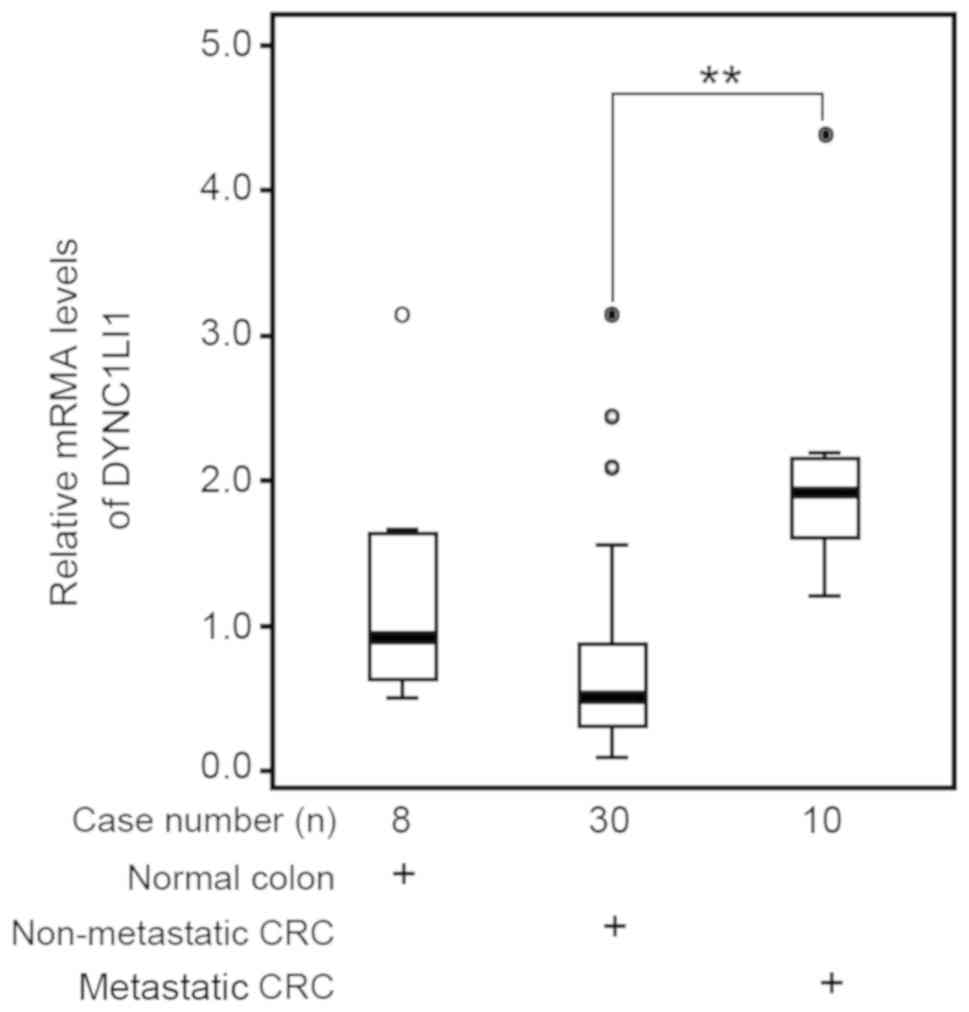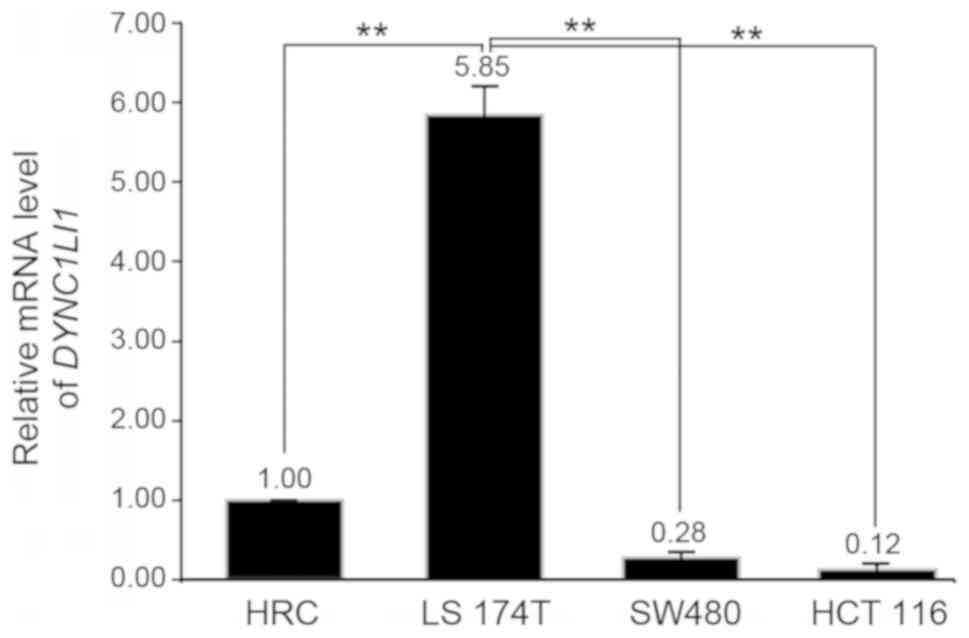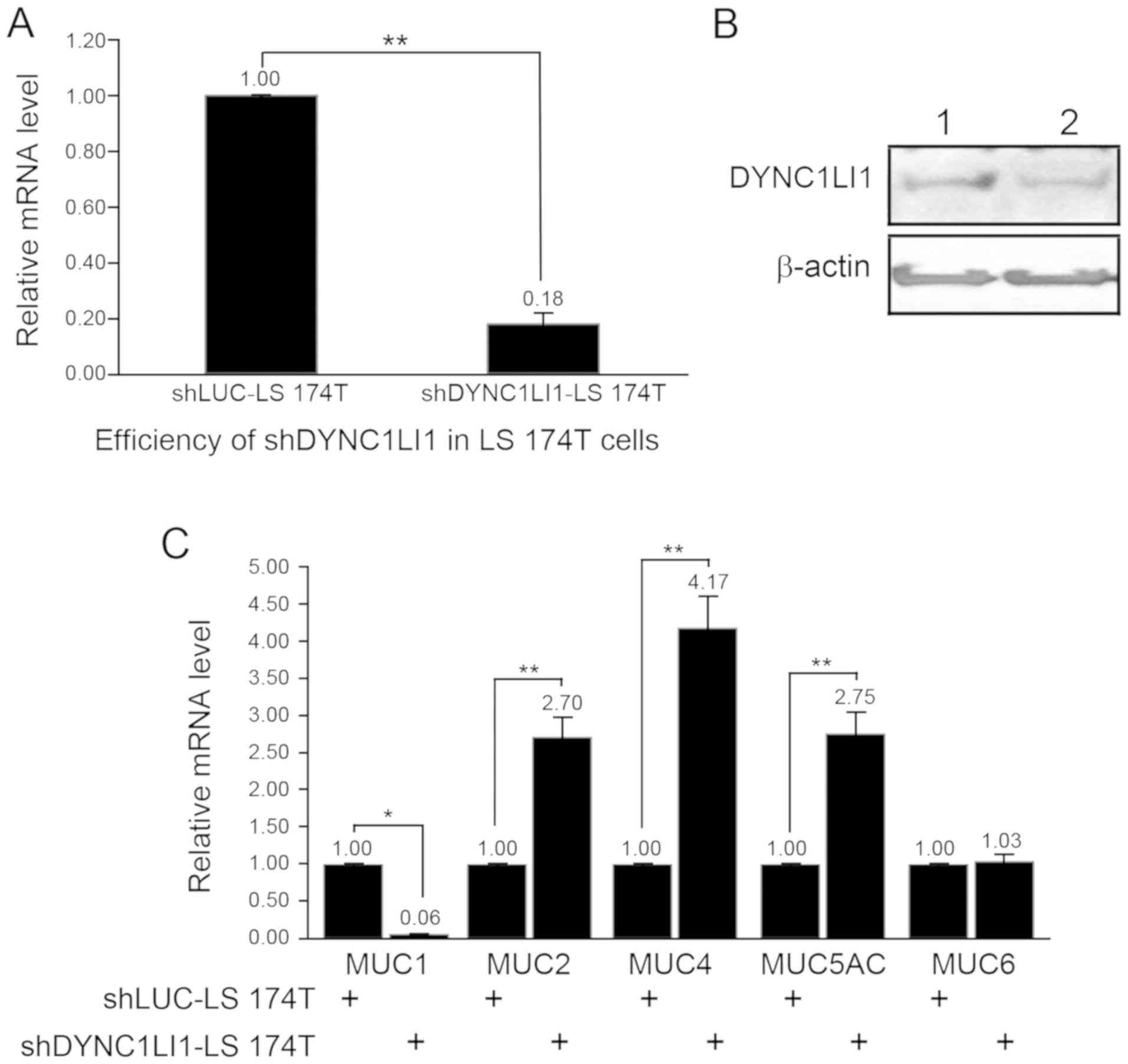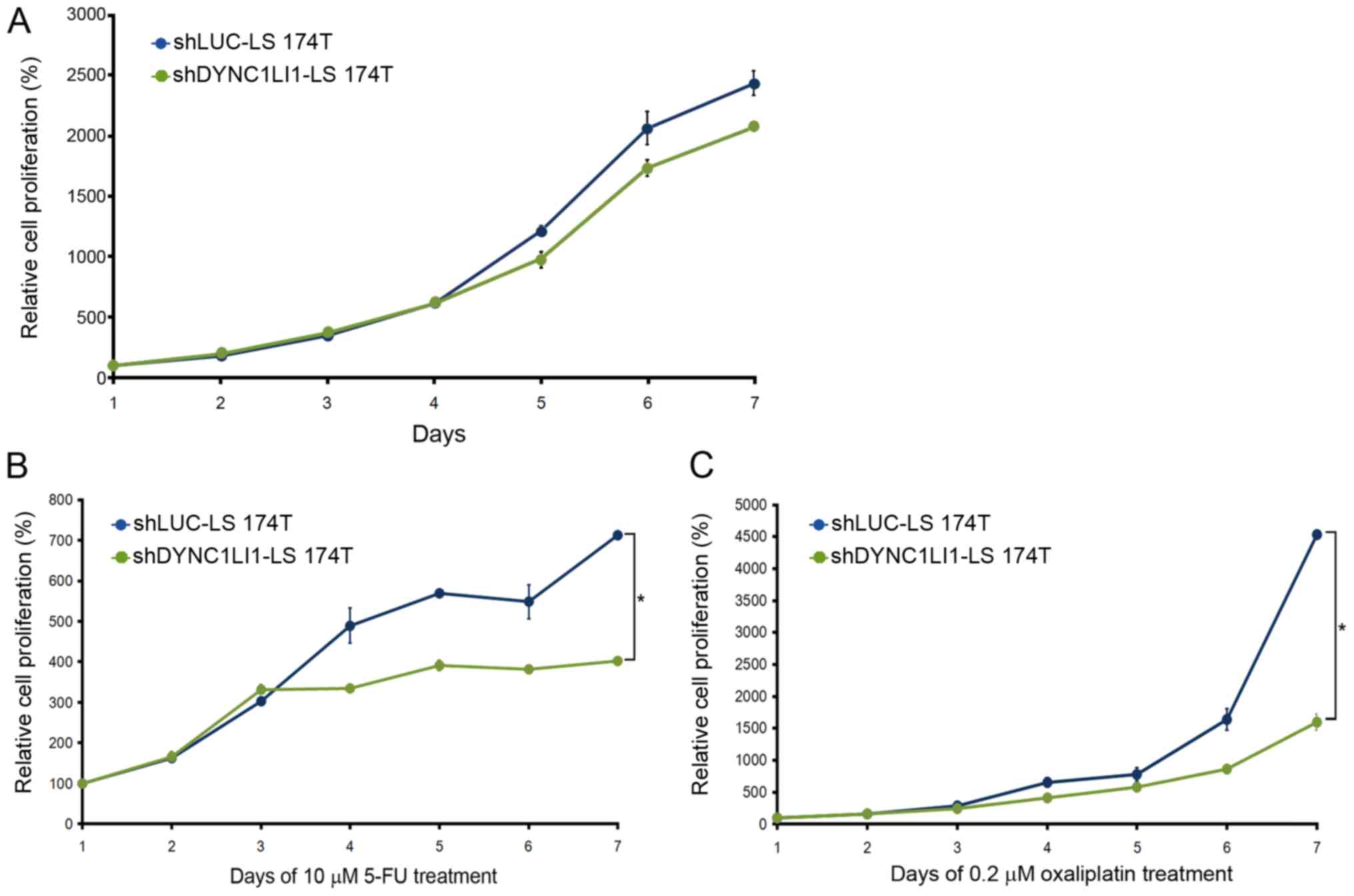|
1
|
Singh R, Kapur N, Mir H, Singh N, Lillard
JW Jr and Singh S: CXCR6-CXCL16 axis promotes prostate cancer by
mediating cytoskeleton rearrangement via Ezrin activation and
alphavbeta3 integrin clustering. Oncotarget. 7:7343–7353. 2016.
View Article : Google Scholar : PubMed/NCBI
|
|
2
|
Wu K, Zhang X, Li F, Xiao D, Hou Y, Zhu S,
Liu D, Ye X, Ye M, Yang J, et al: Frequent alterations in
cytoskeleton remodelling genes in primary and metastatic lung
adenocarcinomas. Nat Commun. 6:101312015. View Article : Google Scholar : PubMed/NCBI
|
|
3
|
Kuijpers M, van de Willige D, Freal A,
Chazeau A, Franker MA, Hofenk J, Rodrigues RJ, Kapitein LC,
Akhmanova A, Jaarsma D and Hoogenraad CC: Dynein regulator NDEL1
controls polarized cargo transport at the axon initial segment.
Neuron. 89:461–471. 2016. View Article : Google Scholar : PubMed/NCBI
|
|
4
|
McKenney RJ, Huynh W, Tanenbaum ME, Bhabha
G and Vale RD: Activation of cytoplasmic dynein motility by
dynactin-cargo adapter complexes. Science. 345:337–341. 2014.
View Article : Google Scholar : PubMed/NCBI
|
|
5
|
McLaughlin RT, Diehl MR and Kolomeisky AB:
Collective dynamics of processive cytoskeletal motors. Soft Matter.
12:14–21. 2015. View Article : Google Scholar
|
|
6
|
Johnson JL, Hamm-Alvarez S, Payne G,
Sancar GB, Rajagopalan KV and Sancar A: Identification of the
second chromophore of Escherichia coli and yeast DNA photolyases as
5,10-methenyltetrahydrofolate. Proc Natl Acad Sci USA.
85:2046–2050. 1988. View Article : Google Scholar : PubMed/NCBI
|
|
7
|
Schnaeker EM, Ossig R, Ludwig T, Dreier R,
Oberleithner H, Wilhelmi M and Schneider SW: Microtubule-dependent
matrix metalloproteinase-2/matrix metalloproteinase-9 exocytosis:
Prerequisite in human melanoma cell invasion. Cancer Res.
64:8924–8931. 2004. View Article : Google Scholar : PubMed/NCBI
|
|
8
|
Vidulescu C, Clejan S and O'Connor KC:
Vesicle traffic through intercellular bridges in DU 145 human
prostate cancer cells. J Cell Mol Med. 8:388–396. 2004. View Article : Google Scholar : PubMed/NCBI
|
|
9
|
Yoon SO, Shin S and Mercurio AM: Hypoxia
stimulates carcinoma invasion by stabilizing microtubules and
promoting the Rab11 trafficking of the alpha6beta4 integrin. Cancer
Res. 65:2761–2769. 2005. View Article : Google Scholar : PubMed/NCBI
|
|
10
|
Izidoro-Toledo TC, Borges AC, Araujo DD,
Mazzi DP, Nascimento Junior FO, Sousa JF, Alves CP, Paiva AP,
Trindade DM, Patussi EV, et al: A myosin-Va tail fragment
sequesters dynein light chains leading to apoptosis in melanoma
cells. Cell Death Dis. 4:e5472013. View Article : Google Scholar : PubMed/NCBI
|
|
11
|
Jiang J, Yu L, Huang X, Chen X, Li D,
Zhang Y, Tang L and Zhao S: Identification of two novel human
dynein light chain genes, DNLC2A and DNLC2B, and their expression
changes in hepatocellular carcinoma tissues from 68 Chinese
patients. Gene. 281:103–113. 2001. View Article : Google Scholar : PubMed/NCBI
|
|
12
|
Dong H, Zhang H, Liang J, Yan H, Chen Y,
Shen Y, Kong Y, Wang S, Zhao G and Jin W: Digital karyotyping
reveals probable target genes at 7q21.3 locus in hepatocellular
carcinoma. BMC Med Genomics. 4:602011. View Article : Google Scholar : PubMed/NCBI
|
|
13
|
Weeks ME, Hariharan D, Petronijevic L,
Radon TP, Whiteman HJ, Kocher HM, Timms JF, Lemoine NR and
Crnogorac-Jurcevic T: Analysis of the urine proteome in patients
with pancreatic ductal adenocarcinoma. Proteomics Clin Appl.
2:1047–1057. 2008. View Article : Google Scholar : PubMed/NCBI
|
|
14
|
Zhao H, Pflug BR, Lai X and Wang M:
Pyruvate dehydrogenase alpha 1 as a target of omega-3
polyunsaturated fatty acids in human prostate cancer through a
global phosphoproteomic analysis. Proteomics. 16:2419–2431. 2016.
View Article : Google Scholar : PubMed/NCBI
|
|
15
|
Parsons CL: The role of the urinary
epithelium in the pathogenesis of interstitial
cystitis/prostatitis/urethritis. Urology. 69:9–16. 2007. View Article : Google Scholar : PubMed/NCBI
|
|
16
|
Petersson J, Schreiber O, Hansson GC,
Gendler SJ, Velcich A, Lundberg JO, Roos S, Holm L and Phillipson
M: Importance and regulation of the colonic mucus barrier in a
mouse model of colitis. Am J Physiol Gastrointest Liver Physiol.
300:G327–G333. 2011. View Article : Google Scholar : PubMed/NCBI
|
|
17
|
Betge J, Schneider NI, Harbaum L,
Pollheimer MJ, Lindtner RA, Kornprat P, Ebert MP and Langner C:
MUC1, MUC2, MUC5AC, and MUC6 in colorectal cancer: Expression
profiles and clinical significance. Virchows Arch. 469:255–265.
2016. View Article : Google Scholar : PubMed/NCBI
|
|
18
|
Byrd JC and Bresalier RS: Mucins and mucin
binding proteins in colorectal cancer. Cancer Metastasis Rev.
23:77–99. 2004. View Article : Google Scholar : PubMed/NCBI
|
|
19
|
Kufe DW: Mucins in cancer: function,
prognosis and therapy. Nat Rev Cancer. 9:874–885. 2009. View Article : Google Scholar : PubMed/NCBI
|
|
20
|
Ivanov AI, Parkos CA and Nusrat A:
Cytoskeletal regulation of epithelial barrier function during
inflammation. Am J Pathol. 177:512–524. 2010. View Article : Google Scholar : PubMed/NCBI
|
|
21
|
Bu XD, Li N, Tian XQ and Huang PL: Caco-2
and LS174T cell lines provide different models for studying mucin
expression in colon cancer. Tissue Cell. 43:201–206. 2011.
View Article : Google Scholar : PubMed/NCBI
|
|
22
|
Du J, Zheng X, Cai S, Zhu Z, Tan J, Hu B,
Huang Z and Jiao H: MicroRNA506 participates in pancreatic cancer
pathogenesis by targeting PIM3. Mol Med Rep. 12:5121–5126. 2015.
View Article : Google Scholar : PubMed/NCBI
|
|
23
|
Ohuchida K, Mizumoto K, Yamada D, Fujii K,
Ishikawa N, Konomi H, Nagai E, Yamaguchi K, Tsuneyoshi M and Tanaka
M: Quantitative analysis of MUC1 and MUC5AC mRNA in pancreatic
juice for preoperative diagnosis of pancreatic cancer. Int J
Cancer. 118:405–411. 2006. View Article : Google Scholar : PubMed/NCBI
|
|
24
|
Baratelli C, Zichi C, Di Maio M, Brizzi
MP, Sonetto C, Scagliotti GV and Tampellini M: A systematic review
of the safety profile of the different combinations of
fluoropyrimidines and oxaliplatin in the treatment of colorectal
cancer patients. Crit Rev Oncol Hematol. 122:21–29. 2018.
View Article : Google Scholar : PubMed/NCBI
|
|
25
|
Park SH, Sung JY, Han SH, Baek JH, Oh JH,
Bang SM, Cho EK, Shin DB and Lee JH: Oxaliplatin, folinic acid and
5-fluorouracil (FOLFOX-4) combination chemotherapy as second-line
treatment in advanced colorectal cancer patients with irinotecan
failure: A Korean single-center experience. Jpn J Clin Oncol.
35:531–535. 2005. View Article : Google Scholar : PubMed/NCBI
|
|
26
|
Fearnhead NS, Wilding JL and Bodmer WF:
Genetics of colorectal cancer: Hereditary aspects and overview of
colorectal tumorigenesis. Br Med Bull. 64:27–43. 2002. View Article : Google Scholar : PubMed/NCBI
|
|
27
|
van Ree JH, Nam HJ and van Deursen JM:
Mitotic kinase cascades orchestrating timely disjunction and
movement of centrosomes maintain chromosomal stability and prevent
cancer. Chromosome Res. 24:67–76. 2016. View Article : Google Scholar : PubMed/NCBI
|
|
28
|
Chang CC, Chien CC, Yang SH, Chen SH and
Huang CJ: Identification and clinical correlation of decreased
expression of cytoplasmic dynein heavy chain 1 in patients with
colorectal cancer. Clin Mol Medicine. 1:6–10. 2008.
|
|
29
|
Holmberg FEO, Pedersen J, Jorgensen P,
Soendergaard C, Jensen KB and Nielsen OH: Intestinal barrier
integrity and inflammatory bowel disease: Stem cell-based
approaches to regenerate the barrier. J Tissue Eng Regen Med.
12:923–935. 2018. View Article : Google Scholar : PubMed/NCBI
|
|
30
|
Gouyer V, Dubuquoy L, Robbe-Masselot C,
Neut C, Singer E, Plet S, Geboes K, Desreumaux P, Gottrand F and
Desseyn JL: Delivery of a mucin domain enriched in cysteine
residues strengthens the intestinal mucous barrier. Sci Rep.
5:95772015. View Article : Google Scholar : PubMed/NCBI
|
|
31
|
Tadesse S, Corner G, Dhima E, Houston M,
Guha C, Augenlicht L and Velcich A: MUC2 mucin deficiency alters
inflammatory and metabolic pathways in the mouse intestinal mucosa.
Oncotarget. 8:71456–71470. 2017. View Article : Google Scholar : PubMed/NCBI
|
|
32
|
McAuley JL, Linden SK, Png CW, King RM,
Pennington HL, Gendler SJ, Florin TH, Hill GR, Korolik V and
McGuckin MA: MUC1 cell surface mucin is a critical element of the
mucosal barrier to infection. J Clin Invest. 117:2313–2324. 2007.
View Article : Google Scholar : PubMed/NCBI
|
|
33
|
Ren J, Agata N, Chen D, Li Y, Yu WH, Huang
L, Raina D, Chen W, Kharbanda S and Kufe D: Human MUC1
carcinoma-associated protein confers resistance to genotoxic
anticancer agents. Cancer Cell. 5:163–175. 2004. View Article : Google Scholar : PubMed/NCBI
|
|
34
|
Cozzi PJ, Wang J, Delprado W, Perkins AC,
Allen BJ, Russell PJ and Li Y: MUC1, MUC2, MUC4, MUC5AC and MUC6
expression in the progression of prostate cancer. Clin Exp
Metastasis. 22:565–573. 2005. View Article : Google Scholar : PubMed/NCBI
|
|
35
|
Morrison C, Merati K, Marsh WL Jr, De Lott
L, Cohn DE, Young G and Frankel WL: The mucin expression profile of
endometrial carcinoma and correlation with clinical-pathologic
parameters. Appl Immunohistochem Mol Morphol. 15:426–431. 2007.
View Article : Google Scholar : PubMed/NCBI
|
|
36
|
Handra-Luca A, Lamas G, Bertrand JC and
Fouret P: MUC1, MUC2, MUC4, and MUC5AC expression in salivary gland
mucoepidermoid carcinoma: Diagnostic and prognostic implications.
Am J Surg Pathol. 29:881–889. 2005. View Article : Google Scholar : PubMed/NCBI
|
|
37
|
Hosseini S, Bananzadeh AM, Salek R,
Zare-Bandamiri M, Kermani AT and Mohammadianpanah M: Prognostic
significance of mucinous histologic subtype on oncologic outcomes
in patients with colorectal cancer. Ann Coloproctol. 33:57–63.
2017. View Article : Google Scholar : PubMed/NCBI
|
|
38
|
Purdie CA and Piris J: Histopathological
grade, mucinous differentiation and DNA ploidy in relation to
prognosis in colorectal carcinoma. Histopathology. 36:121–126.
2000. View Article : Google Scholar : PubMed/NCBI
|
|
39
|
Xie L, Villeneuve PJ and Shaw A: Survival
of patients diagnosed with either colorectal mucinous or
non-mucinous adenocarcinoma: A population-based study in Canada.
Int J Oncol. 34:1109–1115. 2009. View Article : Google Scholar : PubMed/NCBI
|
|
40
|
Niv Y and Rokkas T: Mucin expression in
colorectal cancer (CRC): Systematic review and meta-analysis. J
Clin Gastroenterol. 53:434–440. 2018. View Article : Google Scholar
|
|
41
|
Gonul II, Cakir A and Sozen S:
Immunohistochemical expression profiles of MUC1 and MUC2 mucins in
urothelial tumors of bladder. Indian J Pathol Microbiol.
61:350–355. 2018. View Article : Google Scholar : PubMed/NCBI
|
|
42
|
Even I, Reidenbach S, Schlechter T, Berns
N, Herold R, Roth W, Krunic D, Riechmann V and Hofmann I: DLIC1,
but not DLIC2, is upregulated in colon cancer and this contributes
to proliferative overgrowth and migratory characteristics of cancer
cells. FEBS J. 286:803–820. 2019. View Article : Google Scholar : PubMed/NCBI
|
|
43
|
Kalra AV and Campbell RB: Mucin impedes
cytotoxic effect of 5-FU against growth of human pancreatic cancer
cells: Overcoming cellular barriers for therapeutic gain. Br J
Cancer. 97:910–918. 2007. View Article : Google Scholar : PubMed/NCBI
|



















